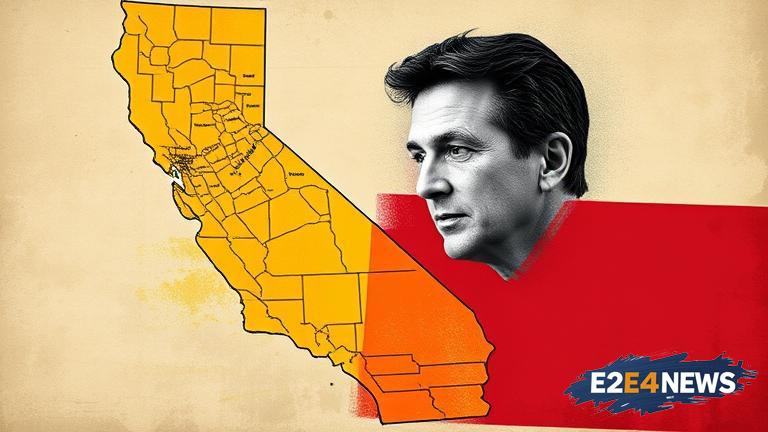California Governor Gavin Newsom has announced plans to redraw the state’s congressional map if Texas moves forward with its own redistricting efforts. This move is seen as a direct response to the ongoing redistricting process in Texas, which could potentially lead to a shift in the balance of power in the US House of Representatives. Newsom’s decision has sparked a national debate over electoral boundaries and the potential consequences of redistricting. The California governor’s threat is likely to escalate tensions between Democrats and Republicans, with both parties vying for control of the House. Redistricting is a highly contentious issue, with many arguing that it can be used to manipulate electoral outcomes and disenfranchise certain groups of voters. In Texas, the redistricting process has been ongoing for several months, with Republicans seeking to strengthen their hold on the state’s congressional delegation. However, Democrats have accused the GOP of gerrymandering, or manipulating electoral boundaries for partisan gain. Newsom’s decision to redraw California’s map is seen as a way to counterbalance any potential gains made by Republicans in Texas. The move could have significant implications for the balance of power in the House, with California potentially gaining or losing seats depending on the outcome of the redistricting process. The national implications of this move are far-reaching, with many states watching closely to see how the situation unfolds. Some have argued that Newsom’s decision is a clever political move, designed to put pressure on Texas Republicans to reconsider their redistricting plans. Others have criticized the move, arguing that it could lead to a national redistricting crisis, with multiple states seeking to redraw their maps in response to the actions of others. The redistricting process is typically carried out every ten years, following the release of new census data. However, the process has become increasingly politicized in recent years, with many states seeking to use redistricting as a way to gain an advantage over their opponents. In California, the redistricting process is typically carried out by an independent commission, which is designed to reduce the influence of partisan politics. However, Newsom’s decision to intervene in the process has raised questions about the role of the commission and the potential for partisan manipulation. The situation is being closely watched by voters and politicians across the country, with many eager to see how the situation unfolds. As the redistricting process continues to evolve, it is likely that we will see further developments in the coming weeks and months. The potential consequences of Newsom’s decision are significant, with the balance of power in the House hanging in the balance. Some have argued that the move could lead to a more competitive electoral landscape, with multiple seats potentially changing hands. Others have warned that the move could lead to increased polarization, with Democrats and Republicans becoming even more entrenched in their positions. The national fight over redistricting is likely to be a major issue in the coming years, with many states seeking to use the process to gain an advantage over their opponents. As the situation continues to unfold, it is likely that we will see further developments and twists in the coming weeks and months. The role of the courts will also be significant, with many expecting legal challenges to the redistricting plans in both Texas and California. The Supreme Court has previously ruled on redistricting cases, and it is likely that the court will be called upon to intervene again in the coming years. The potential consequences of the court’s decisions are significant, with the balance of power in the House hanging in the balance. As the redistricting process continues to evolve, it is likely that we will see further developments and twists in the coming weeks and months.
